Have you ever heard of Küllüoba Mound? Those who follow the archeology news or those who live in the Seyitgazi district of Eskişehir may have heard of it. Although its name is not heard much, it is an important settlement for Anatolian history. Küllüoba Mound. The first urbanization of Western Anatolia, the oldest remnants of painkillers detected in the worldKüllüoba is a place where important findings for world history, such as the discovery of Egypt and trade with Northern Syria and Mesopotamia, were discovered.
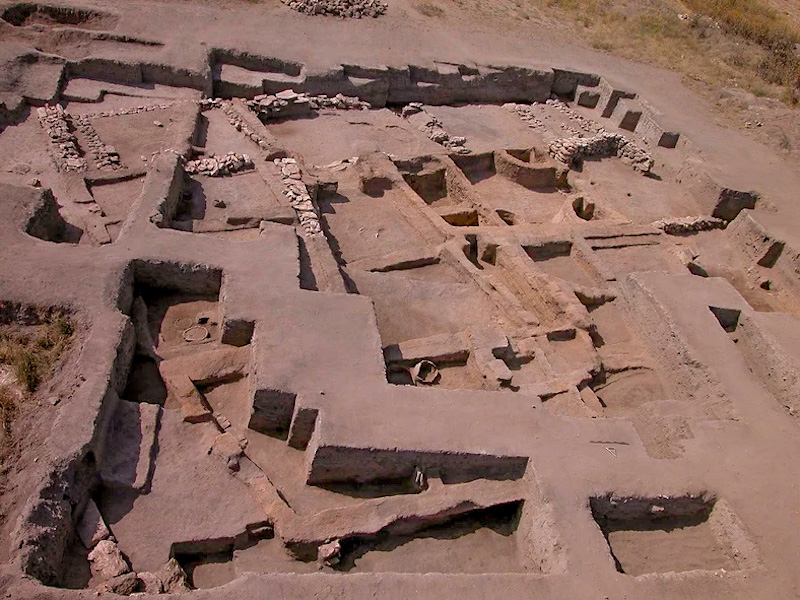
Excavations have been going on since 1996, who knows what more will be found as the excavations continue! In this text; You can find everything you want to know about Küllüoba Mound, such as the history of Küllüoba Mound, information about the excavation, its location, visit information. You will find it, enjoyable reading!
Those who follow my social media accounts know that I worked voluntarily in Küllüoba Mound Excavation for two and a half weeks in July 2023. I wanted to share what I learned about Küllüoba Mound.

What You Will Find In This Article
What is a mound?

Firstly "What is a mound?“Let me explain it; Throughout history, human beings have preferred to settle in the same places, demolishing old buildings and building new ones on top of them. The mound is the name given to the hills where the settlements were destroyed and rebuilt, layer by layer. At the top of the mounds, there is the closest settlement to the present day, and at the bottom, the oldest settlement. There are many mounds in our country. There are around 200 mounds in the Eskişehir region, where I participated in the excavation.
There are mounds of different sizes in almost all regions of our country. Some of the most famous mounds in Anatolia;
- Ankara – Gordion (Yassıhöyük)
- Batman – Demirköy Mound
- Batman – Hallan Çemi Mound
- Burdur – Kuruçay Tumulus
- Burdur – Hacilar Tumulus
- Corum – Alacahoyuk
- Eskisehir – Demircihuyuk
- Eskişehir – Küllüoba Mound
- Konya – Çatalhöyük
- Tunceli – Sakyol Höyük
History of Küllüoba Mound
Küllüoba is a mound containing all phases of the Early Bronze Age. In the lowest layer BC. There are up to 3300 ruins. In other words, our mound, which has been inhabited continuously for 1350 years from the end of the Late Chalcolithic Age to the end of the Early Bronze Age, is 350 meters long, 250 meters wide and 10 meters high.
The contemporaries of the mound are the Sumerians City-States, Akkadian Empire in Mesopotamia, the Early Dynastic and Old Kingdom periods in Egypt, and Troy's I, II.,III.IV. and V. settlements.
In the fields to the south and southeast of the mound, it was determined that there was a settlement belonging to the Late Hellenistic Period, so it can be said that settlement continued throughout history in the region. It is not a coincidence that today's village is only 1,3 km away.
Why is Küllüoba Mound So Important?
Let's see why Küllüoba is so important!
1) The First Urbanization Steps of Western Anatolia were Taken Here
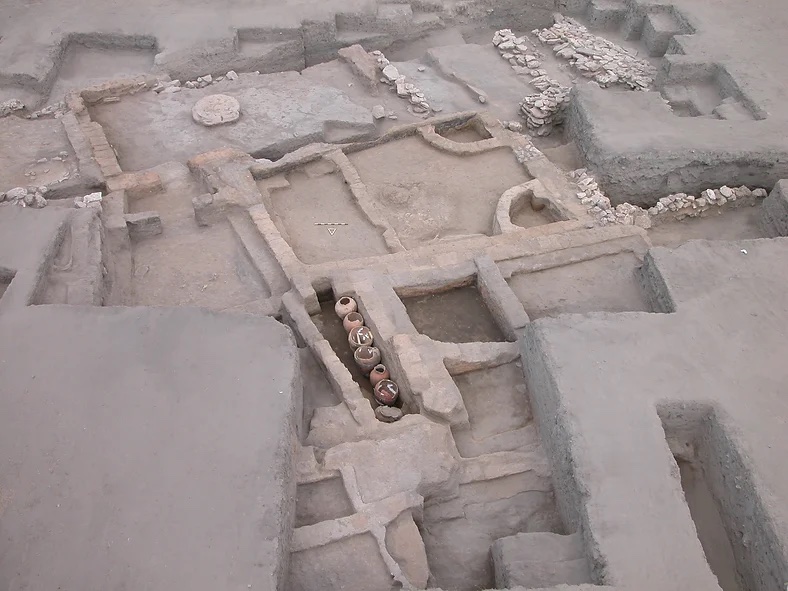
Küllüoba Mound; The upper and lower city, monumental structures and public buildings found in the excavations show that the first steps of the urbanization process in Western Anatolia were taken here. Apart from this, finds such as the presence of a stove and oven in every house and weaving looms show that the houses were also used as workshops here. Intensive production in many silos in houses and common areas. It shows that the 5-year-old paint crushing palette was used to paint the pottery, that is, the aesthetic understanding began to develop.
2) Anatolia's Oldest Non-Settlement Cemetery Is Here
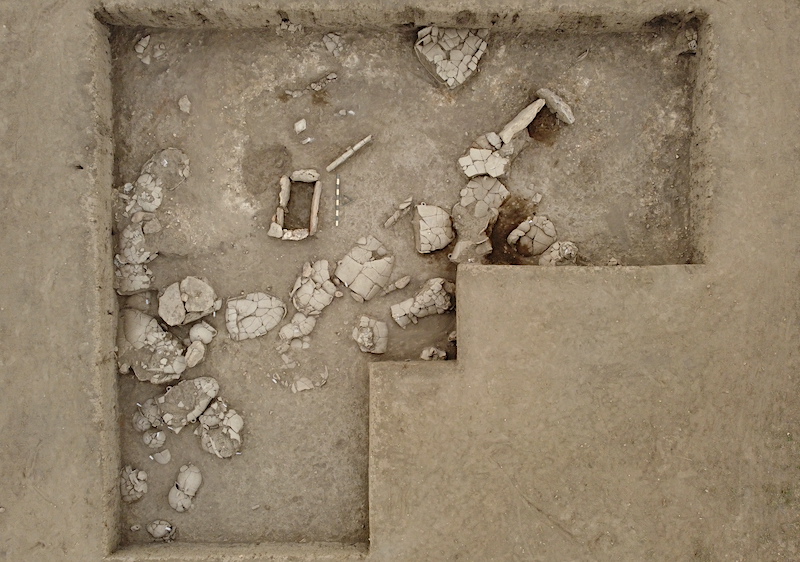

The oldest non-residential cemetery in Anatolia was unearthed in Küllüoba. Since the Neolithic period, funerals have been buried in the floors of houses. As a sign of transition to a civilization, the cemetery of the settlement in Küllüoba was created at a point that can be seen from the settlement. About 120 human skeletons, including children, were found in the graves unearthed during the excavations. In some skeletons, traces of violence were detected. The bodies were buried in jars, cist graves or directly into the ground.
3) The World's Oldest Painkiller Remains Found Here
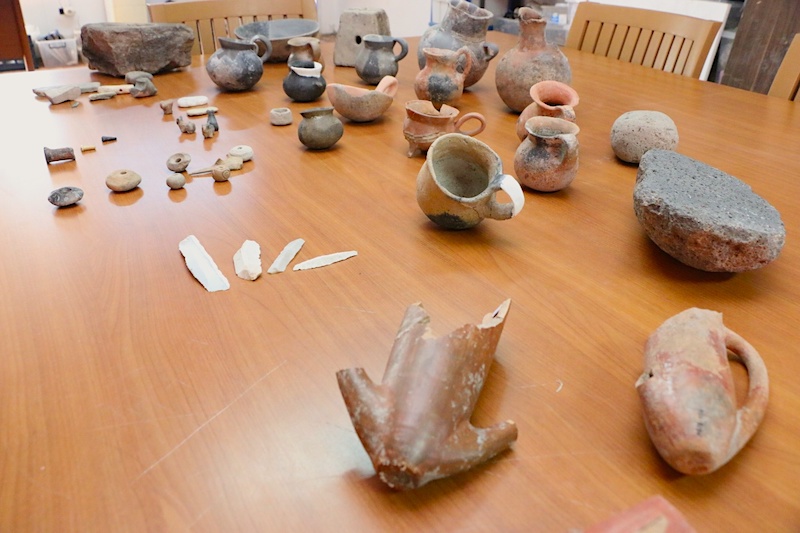
During the excavations in Küllüoba, traces of the oldest painkillers and herbal medicines that can be found in the world, dating back 4500 years, were found here.
The analgesic active ingredient, salicylic acid, was found in the analyzes made on 4.500-year-old pottery that was unearthed from a votive pit during the excavations. Salicylic acid is the main raw material of quinine and aspirin-type pain relievers used today, obtained from the bark of the willow tree. This discovery makes Küllüoba a very special place, as it is the first sample of painkillers found in the world.
Kulluoba Excavation

Küllüoba Excavation was carried out under the direction of Eskişehir Archeology Museum and Prof. from Istanbul University, Department of Protohistory and Near East Archeology. Dr. It started in 1996 under the scientific management of Turan Efe, yes you read it right 1996! Over the years, scientific excavations have been carried out in different parts of the mound and many important finds have been found. The excavation has been carried out since 2019 by Bilecik Şeyh Edebali University Faculty Member Assoc. It continues under the chairmanship of Murat Türkteki. In addition to the Bilecik Şeyh Edebali University team that presided over the excavation, Hacettepe University Department of Anthropology and Batman University Archeology Department support.

In addition to the Ministry of Culture and Tourism, the excavations are financed with the support of Eskişehir Metropolitan Municipality and Knauf company. It is obvious that more financial support is needed to properly display the excavated areas and to protect them from natural factors such as sun, rain and wind.
In July 2023, I voluntarily joined the excavation team of my teacher in Murat Türk. Thank you once again for accepting me to dig, it was a very good experience for me.
For more information Official website of Küllüoba Excavationyou can examine.
Where is Küllüoba Tumulus?

Küllüoba Mound is located 35 km southeast of Eskişehir, 15 km northeast of Seyitgazi District and 1.3 km south of Yenikent Village. Küllüoba was established on the northern edge of the bed of the now dried Kireçkuyusu Stream. on the Google Maps application of Küllüoba Mound. click for location.
The mound has a strategic location as it is at the junction of all natural transportation lines coming from Ankara, Konya and Afyon. The roads stretching from Küllüoba to the west, to the plains of Eskişehir, İznik and İnegöl, continue as far as the Northern Aegean, Southern Marmara, and thus the Balkans. The mound is important because it is a settlement on the trade routes from east to west.
Küllüoba Mound Visit Information

Since the layers of Küllüoba Mound are mudbrick, it is very difficult to protect and exhibit. A very limited part of the finds from the mound are exhibited in Eskişehir Eti Archeology Museum.
You can visit Küllüoba Tumulus during the excavation period, from mid-July to the end of August every year. If you are lucky, our excavation director Murat Türkteki will personally show you around. Before you go, the mound is open to visitors during the excavation hours. @kulluobakasisi It would be good to contact the instagram account. You can follow the active periods of excavation from the same account.
How to Go to Küllüoba Tumulus?
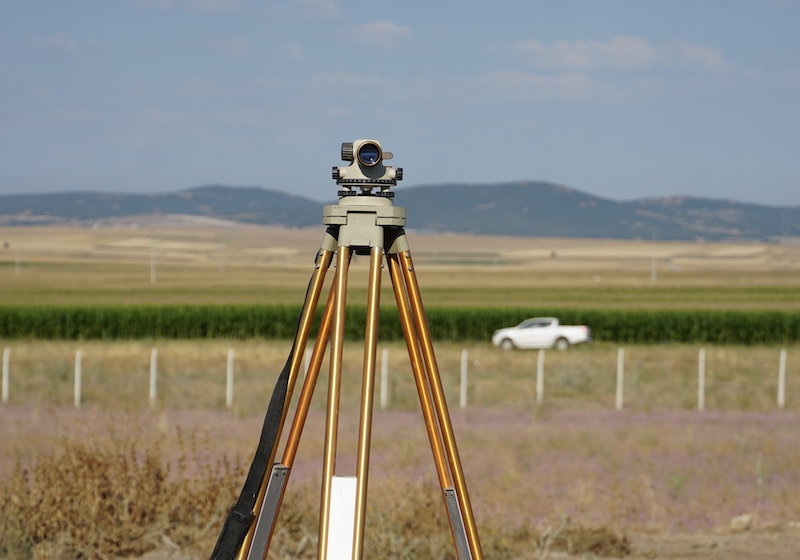
- If you will come to Küllüoba with your own vehicle; You will have to continue towards Yenikent Village at the 100th kilometer of the D25 road between Eskişehir and Ankara. After 11 km, you will reach Küllüoba Excavation, and after 12,5 km, you will reach Küllüoba Mound.
- If you want to go to Küllüoba by public transport; It is possible to reach Küllüoba Tumulus with the red 75 numbered municipal buses departing from the Odunpazarı Stop, which runs between Eskişehir and Seyitgazi. Make sure to tell the bus driver that you will get off at the mound, otherwise you will have to walk 1,5 km from the village to the mound.
If you are planning a trip to Yazılıkaya Monument or Yazılıkaya Valley, I suggest you add Küllüoba to your route. Before you plan Yazilikaya Valley Be sure to check out my post.
There is another richness in every corner of our country, it is up to us to go and see!

3 Comments
Thank you sister. We are waiting for you again :)
Look, I'll come :)
we are complete. You come 😀